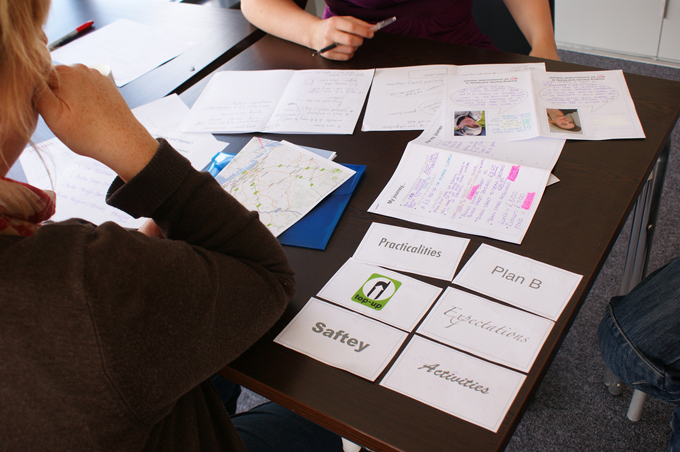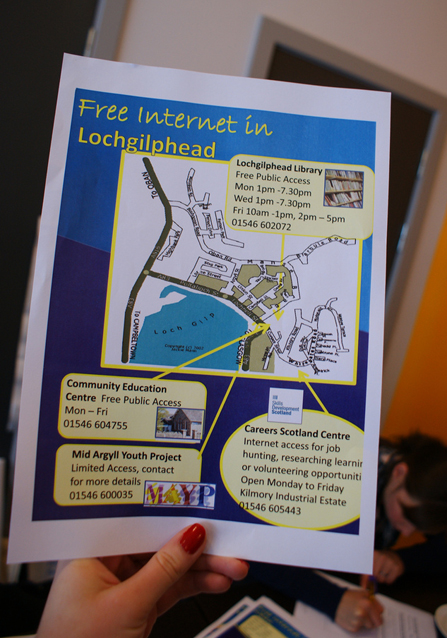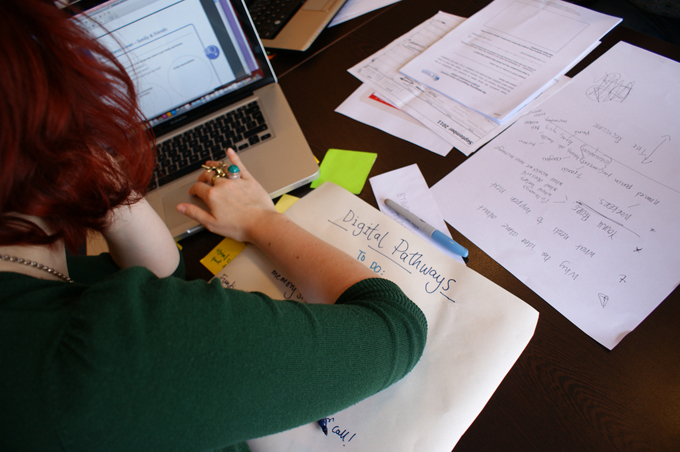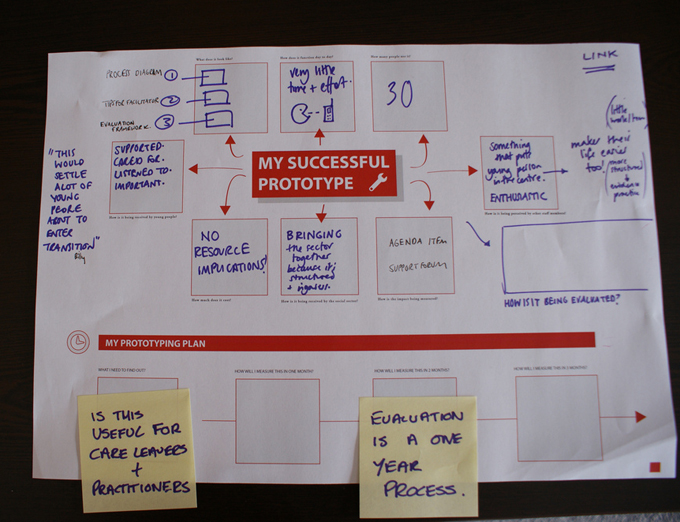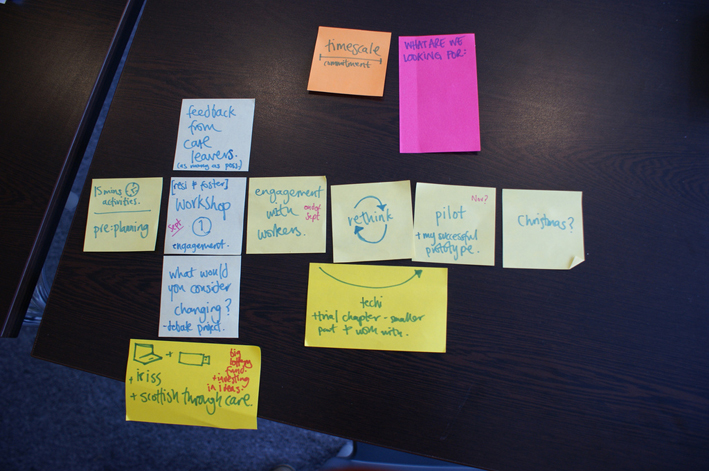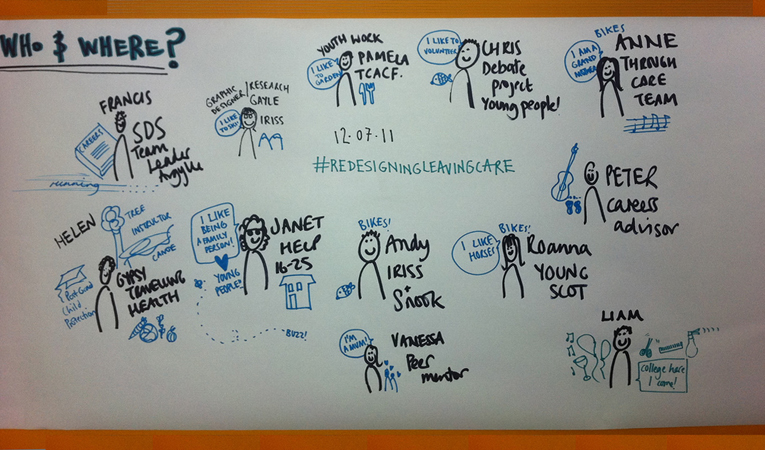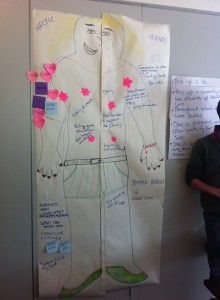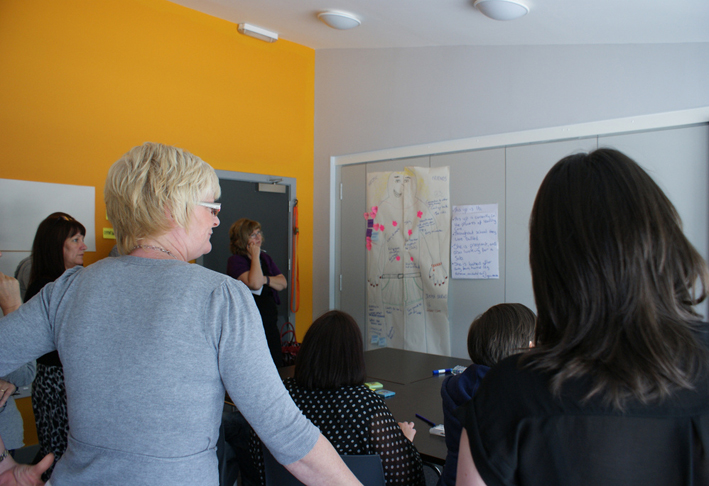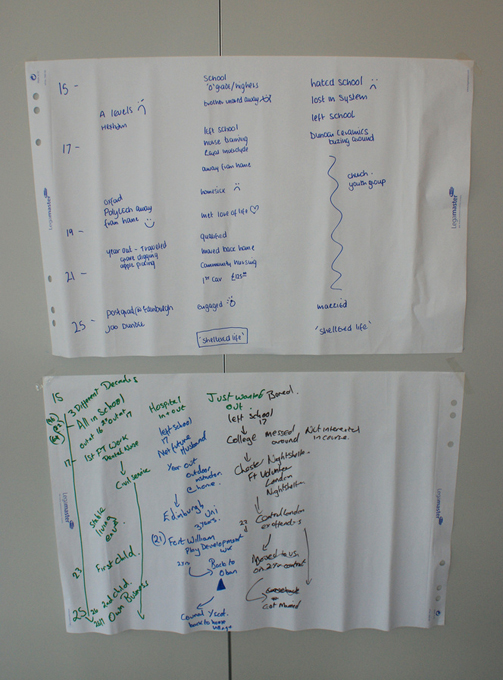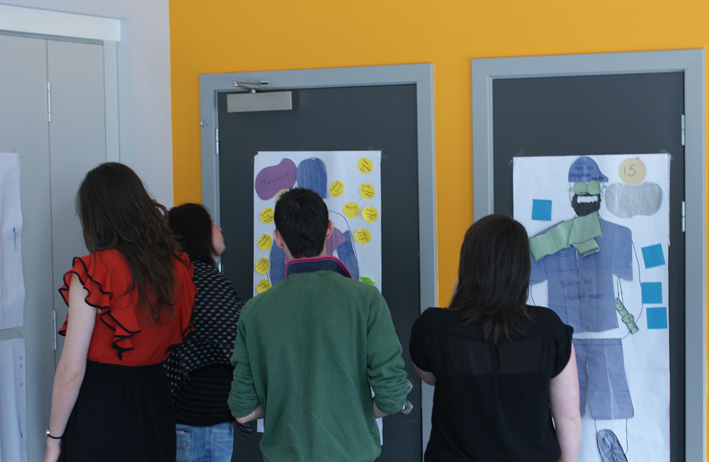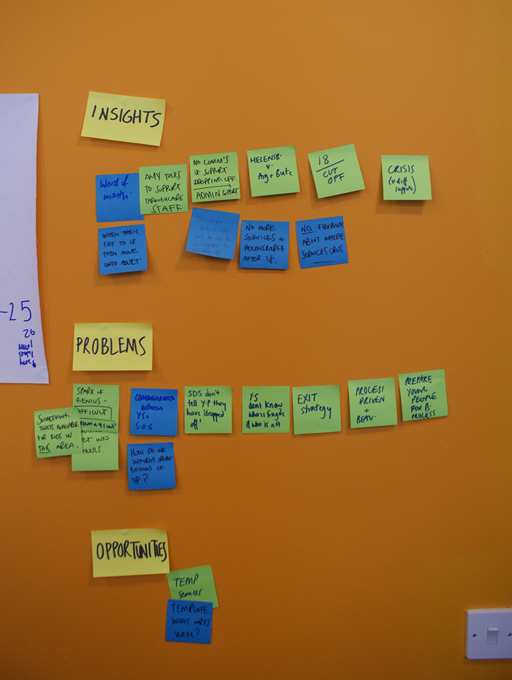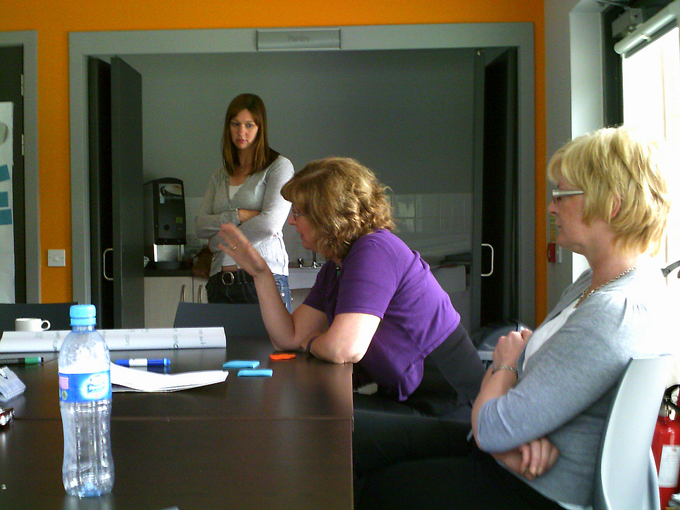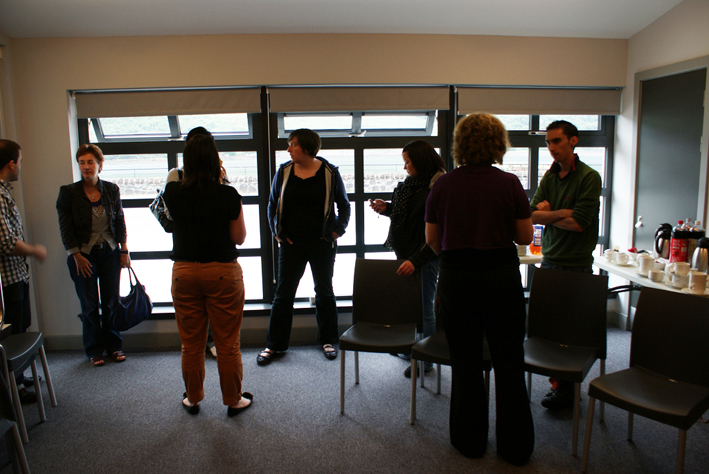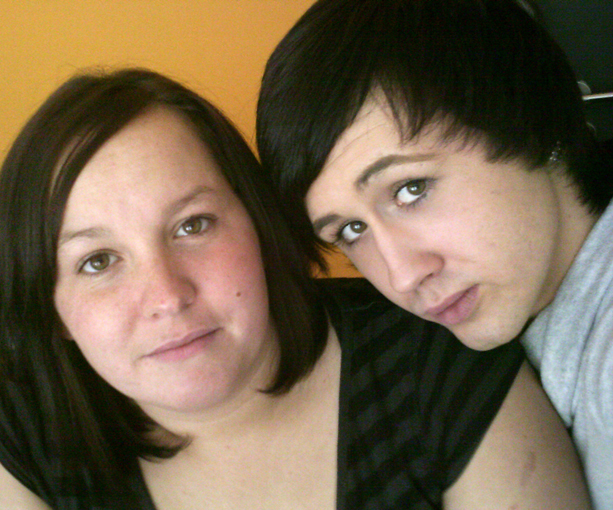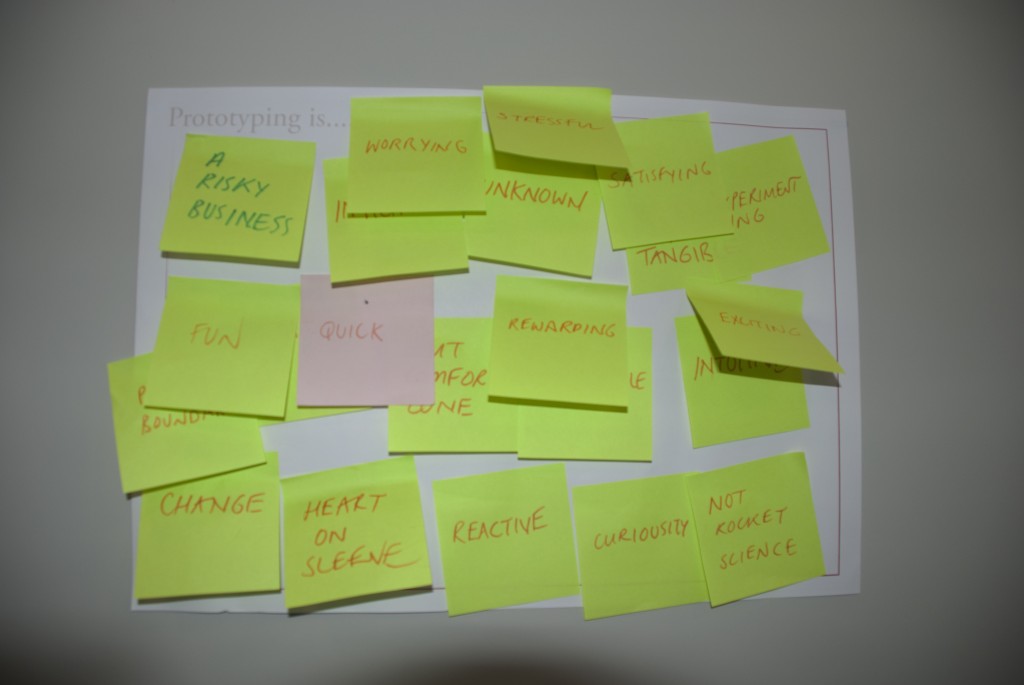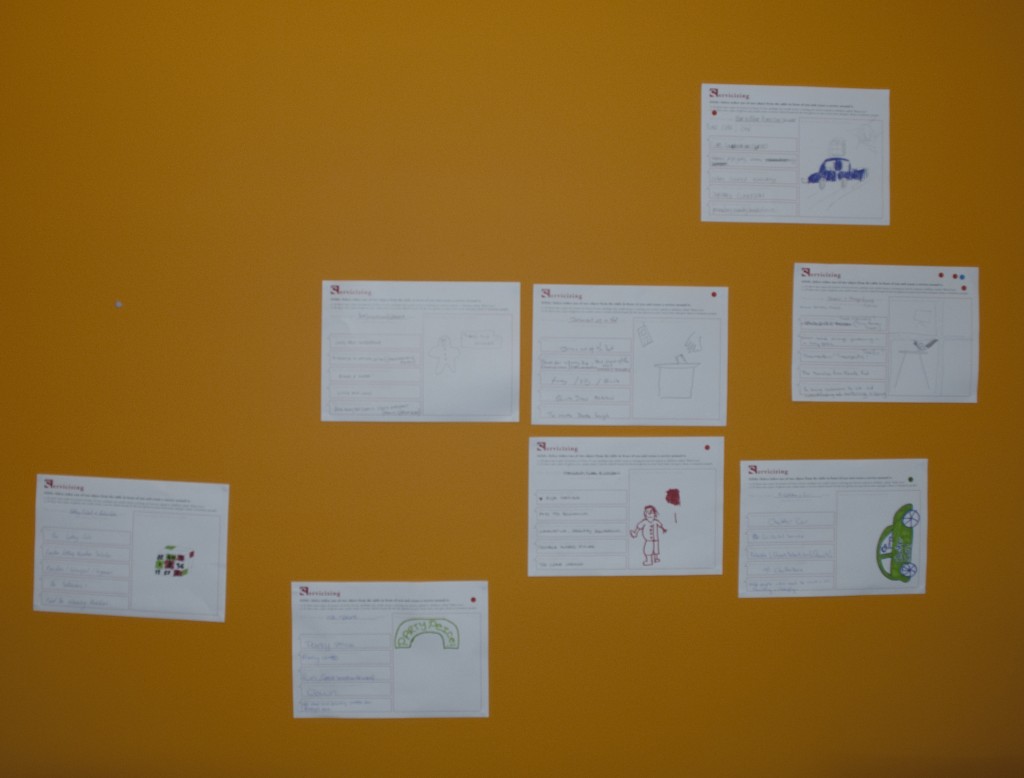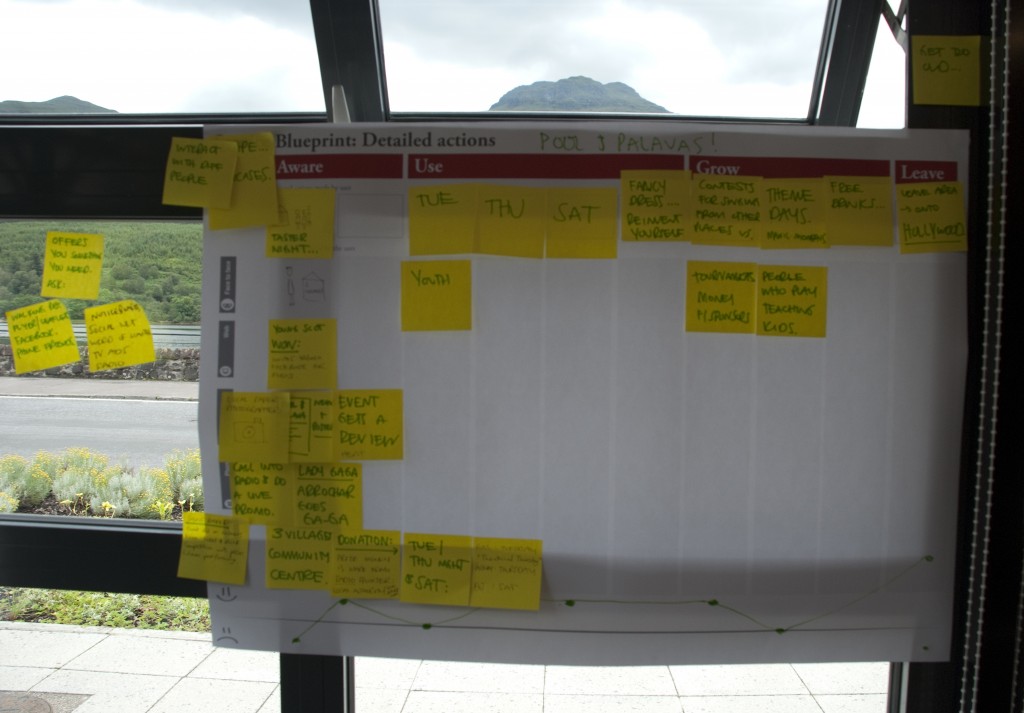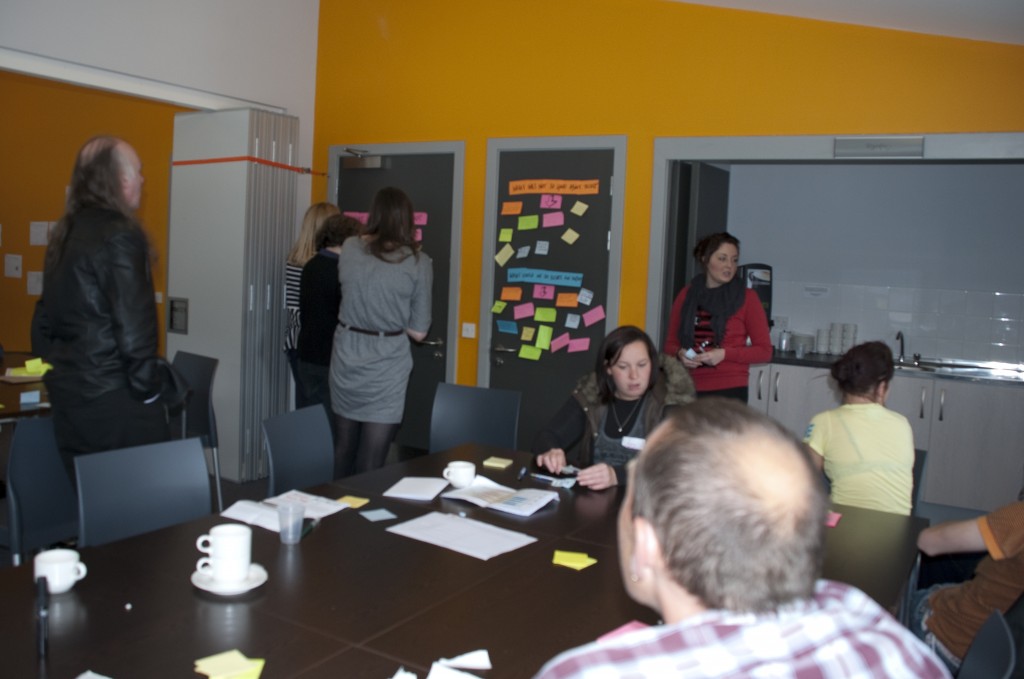So – as promised following the last post – here is a round up of the ideas we came up with. In no particular order…
Computers for Care Leavers

This idea arose out of other ideas which were hinged apon young people having access to the internet. When discussing these ideas a common cry was – “But care leavers don’t usually have access to the internet, in residential homes or after they leave care”. When this was explored further we identified that young people do tend to have access to the internet using their mobile phones (generally not smart phones), which they commonly use for social networking. Having a computer was seen as an opportunity to use the internet in different ways, for example looking up what they could do in the new area they moved too, for jobs, college courses, working on their CV or as a social networking tool to keep in contact with friends and family.
So how do you connect care leavers with a computer? FreeShare were presented as an option, where people give away a whole nature of different items including computers. I think the idea was to link up the people who provide resources to care leavers to FreeShare, who in turn could connect freec omputers with those who need one. There is also an organisation in the UK dedicated to getting people online which could be partnered with to specifically support care leavers access the internet.
Inevitably when it comes to technology and the internet people talk about care leavers privacy and safety online. However the young people immediately countered this perspective by saying they are online on their mobiles, why is this any different, and why should their access to the internet be any different from any other young person who has moved away from home?
For more information about making the internet more accessible to young people in and leaving care please see:
And in general:
Where is my free internet?
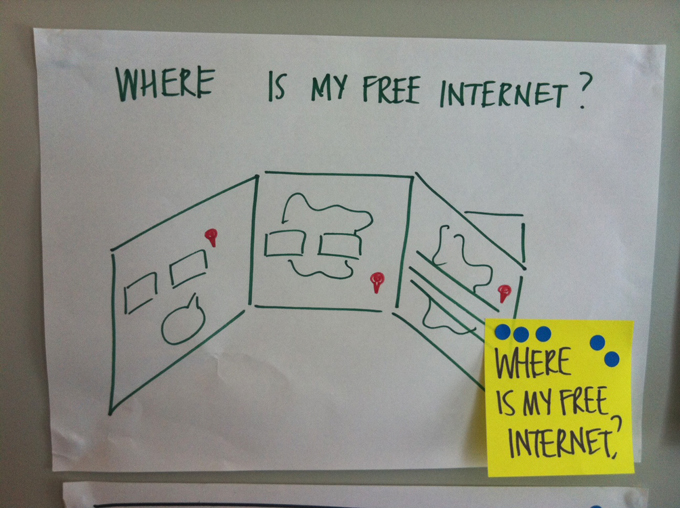
Following on from this idea, the discussion centered around how care leavers would access the internet in other ways (if they did not have a computer at home). Thinking about a young person who may leave care and be placed in a location they have not previously lived, this idea reviewed all the possible places people can access the for free.
Electronic Pathways

This idea, also to do with technology, wanted to look at ways in which Pathways (the process and folder of forms that assist workers and young people to plan their leaving care package) could move away from a paper based form and become electronic. The rational behind this idea was that after a young person has written and signed the forms in Pathways everything feels very final and “set in stone”. Life is more flexible than that and young people’s aims, ambitions and life circumstances are likely to change. An electronic version that could be updated and shared between a young person and their worker was presented as an idea to change the current process. People also felt it would be more empowering for young people to have electronic access to this file rather then have their worker keep it or a copy of it.
Family and Friends Pack
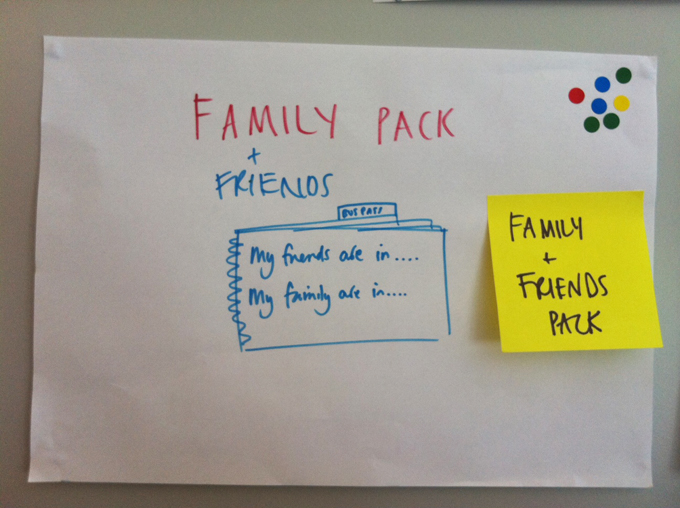
One of the experiences a young person on the project shared with us was being from one town in Argyll and Bute (where his family live), living in a residential school in a town in another Local Authority (130 miles away from his home town and where his friends and workers live), and moving to a different town after leaving the residential school (90 miles from his home town and 35 miles from his residential school). As this young person has £50 a week to spend as he likes it is not enough to cover travel to visit friends and family. Even though this is something a Leaving Care team are likely to provide it seems young people are not aware they can ask for help to visit friends and family and it is not prompted in any materials care leavers receive.
The Friends and Family pack idea is a resource that young people and their workers would be able to use together to plan and incorporate keeping in touch with friends and family into the their leaving care plan.
My Money
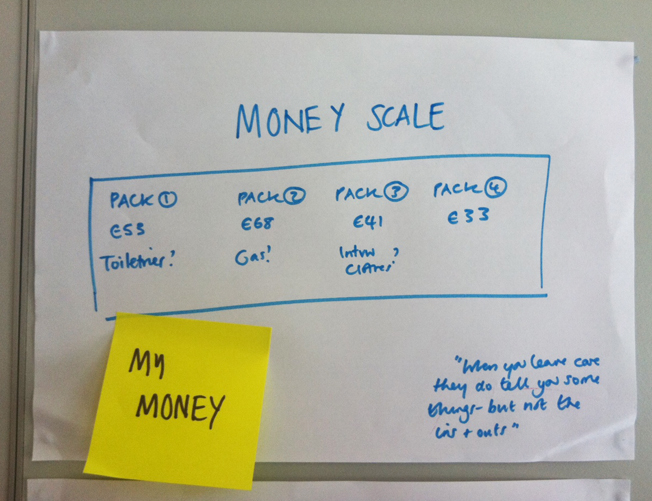
This idea arose out of the conversations young people were having naturally. There was a lot of discussion around what kind of support they were getting, realising they could access other types of support and discussing how they were supposed to live on £50 per week. Some of the young people in the group were aware of the Local Authorities criteria scale in terms of provision to care levers and an animated discussion arose about what kind of support you would want if you knew what was available. My Money was a way of making that information more transparent and encouraging care leavers to personalise the support they were provided. This made me think about the personalisation/self-directed support agenda for adults who use services – interesting to see link to how young people are thinking care packages could be provided.
Online Diary

This idea didn’t really get fleshed out too much in the workshop (please someone correct me if I am wrong) but we had a discussion around when you update your status on Facebook it gives an idea of how you are feeling and what you are doing or interested in finding out about. Being able to see this kind of information could instigate connecting up with young people in ways that surpass the need to speak to them because of functional matters.
We never got down to the nitty gritty about how this would work, there are obviously complex issues around access, privacy and what someone does with the information posted on a Facebook. However it is interesting to note it is a medium we use every day to support and share our social and emotional needs and concerns, and there is nothing like this used by services at the moment. One of Dana Boyds’s thought provoking posts about using Facebook with young people give food for thought as to how this communication medium could support relationships.
Design your own Pathways
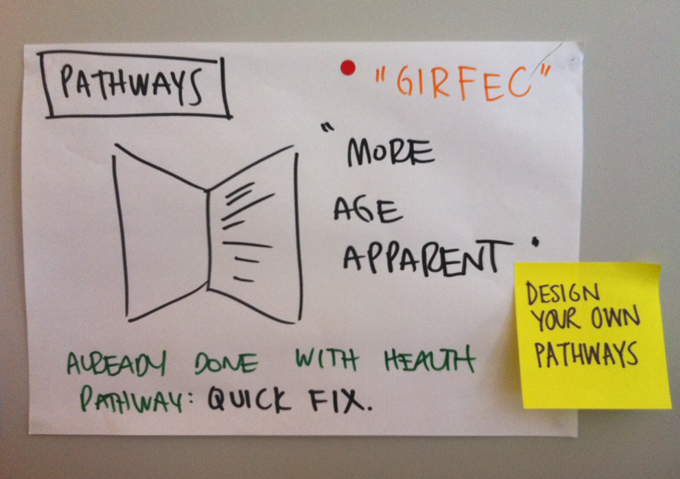
Pathways is the process and folder of forms that assist workers and young people to plan their leaving care package. Most local authorities in Scotland have adapted these materials to suit their locality and to enable young people to engage withe process/materials better. This idea was about taking Pathways for Argyll and Bute and making it relevant to different ages, similar to the GIRFEC agenda which aim to work towards a child centred approach.
Proactive not reactive
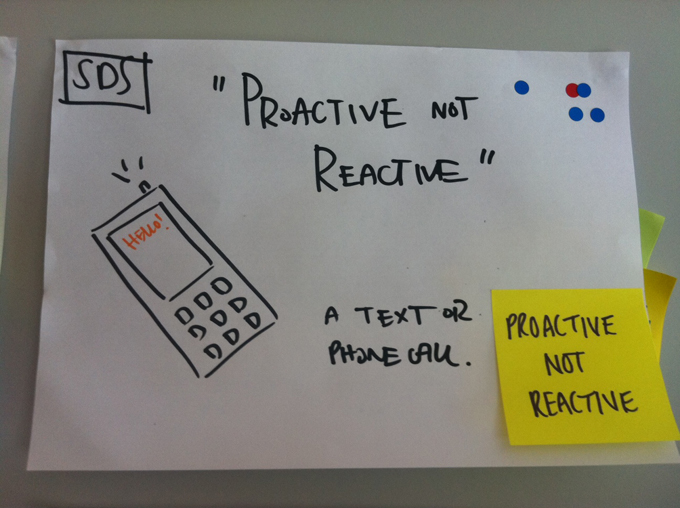
I think this idea came from a conversation that happened in workshop 2 but carried on through the other workshops. The conversation was about the fact that most services engage with young people to provide health/housing/educational support. Once a young person is deemed to have successfully been provided that support they are generally removed from a case load on the service database, meaning the service provider does not tend to get back in touch with them unless their is a problem (i.e. they lose their house, become unemployed or become unwell).
In thinking about service provision from an emotional and social perspective, people recognised that a) once you have reached a positive destination, i.e. got your own house or started a job, things can change, and b) care leavers may not necessarily have support from family/friends in these areas to support positive growth. This idea therefore came about by thinking what could services do to support this situation that doesn’t currently map onto their service process? The idea is that instead of letting care leavers “drop off’ their case management systems after they have reached their positive destination, the service will check back in with them to see how their house/job/health is going. This aimed to pre-empt any changes to that positive destination by offering assistance. Even if this assistance is not required, it would remind the young person that someone is thinking about their needs and is there for them to help should they need it.
Success stories – share them!
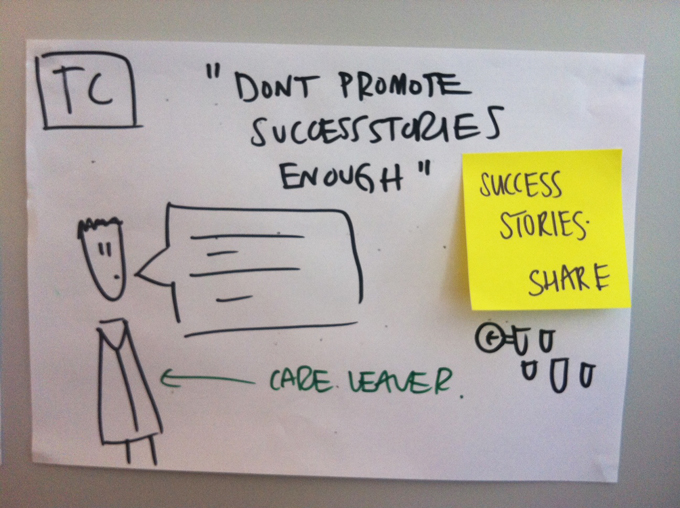
Some young people in the workshops felt that there was always a negative portrayal of care leavers built up in the press or in peoples minds. They felt that this did not set aspirations high for the young people i.e. they may think that success after leaving care is not possible. This idea was to share success stories so aspirations were raised and others were able to see a ‘route’ into the future after care.
Support.com
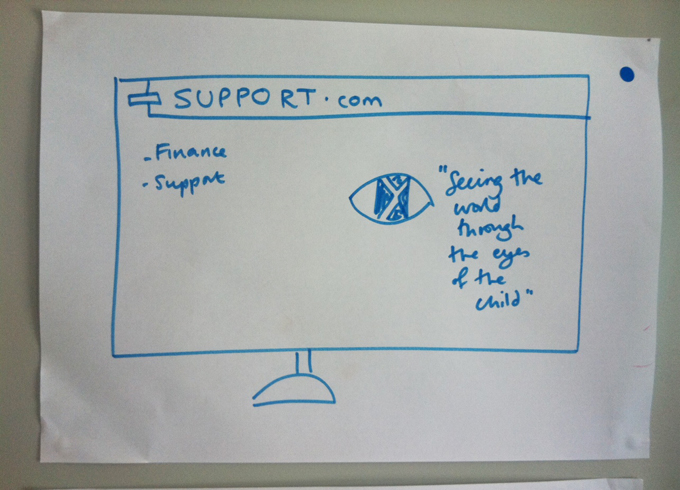
This was an idea two of the young people who attend the workshops have been working on with Argyll and Bute council and wanted to push forwards. SUPPORT is an acronym (I’m afraid I can’t remember what it stands for but will post it in a comment) and is a website that aims to enable other young people in care to see what life is/was like for them. Similar to Success Stories idea but also including advice and information online.
Throughcare Worker support
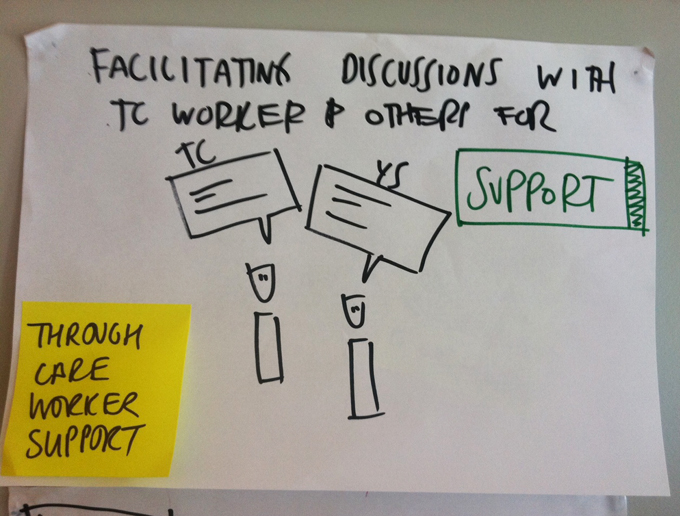
Contrary to what the title of this idea might suggest this idea is about supporting other workers who come into contact with care leaver but don’t necessarily work with them. The idea was to provide these workers with more information about care leavers so they are better equipped to respond to their needs. There is a Linkedin group for professionals working with vulnerable children and young people, which shares good practice and is a space to discuss problems. It is run by Shirley Ayres, a social care consultant, and may be of assistance to those who are intersted in this idea.
Why work at the weekends
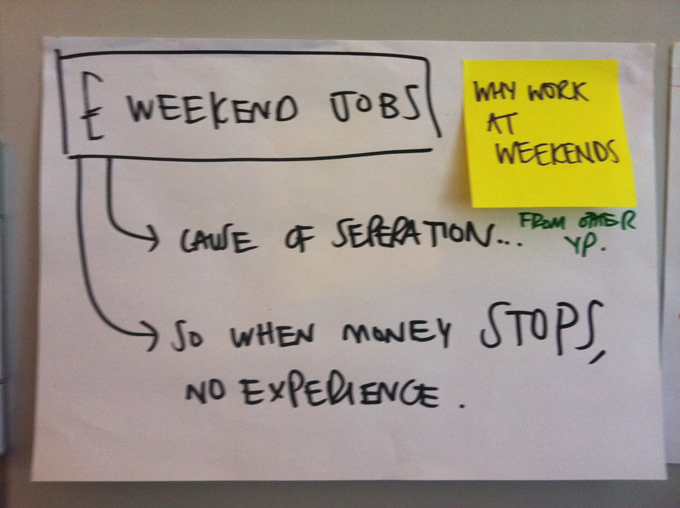
There was quite a lot of discussion around this idea. It revolved around encouraging young people in care to get weekend work so they could experience earning and dealing with their own money. It would also give them some some work experience and skills before they leave care to add to their CV and help them think about what kind of job they would/would not like to do. This is a process lots of young people who are not in care go through when they are growing up and not having this experience seemed to lead people to the conclusion that it disadvantaged young people in care. From a social and emotional perspective this was considered a good way to build up confidence and a different circle of friends and acquaintances too.
What being an adult means…
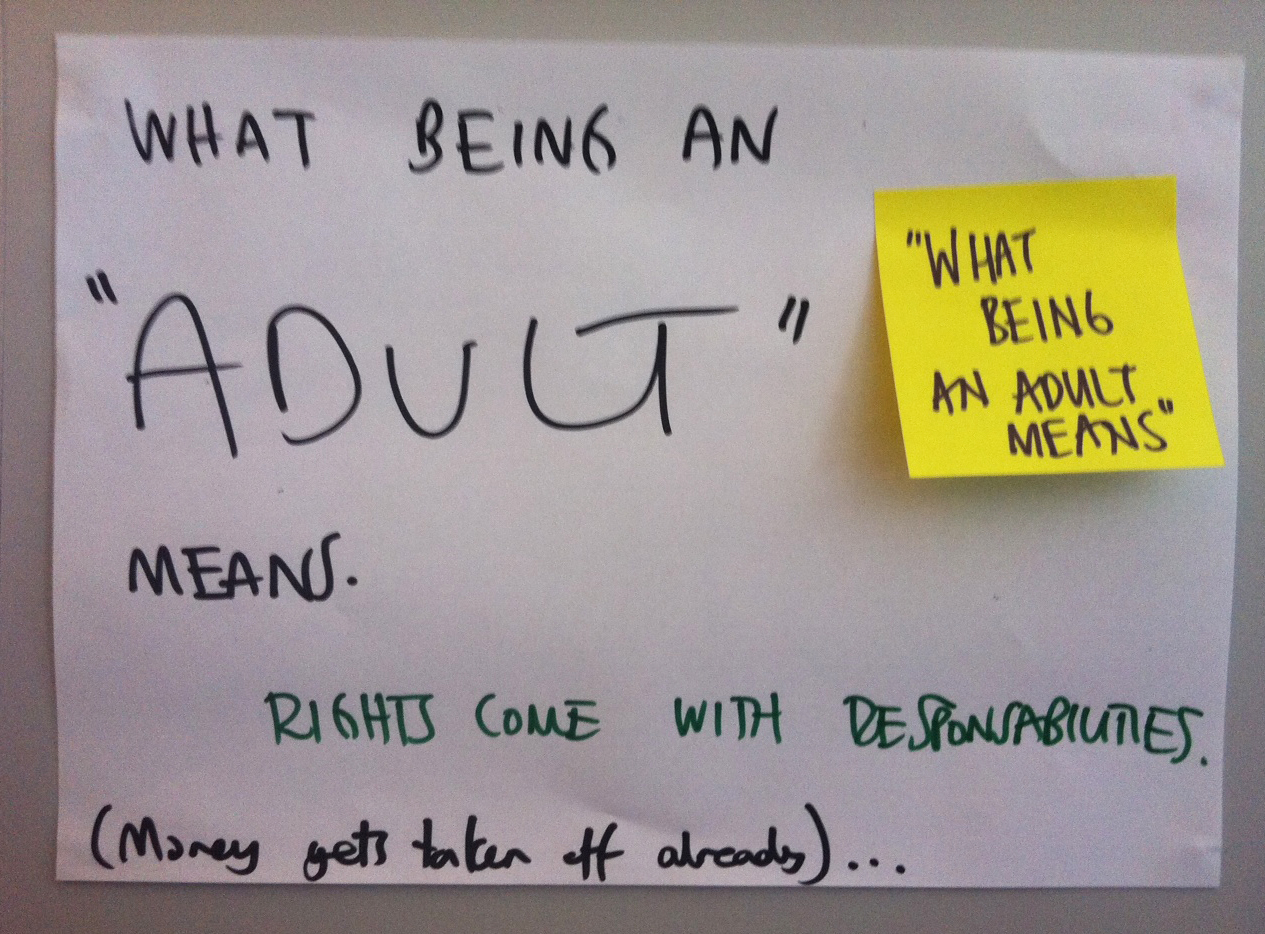
There were two sides to this idea. One was that it would be a good conversation to have to dispel the myth that once you leave home/care that you have become and adult and you can do everything on your own. This was something that came up in workshop 2 amongst the practitioners who shared their leaving home journey and reflected upon their route to living independently. They considered the amount of times they lived back at home/borrowed money/change college course, and the people they relied upon until they “got on their feet” between the ages of 25 – 30. Simply acknowledging this journey, that it is not all plain sailing and involves assistance was considered a healthy conversation. Also considering what being an adult means to different young people and workers was also thought to be valuable to know.
The other side of this idea was considering what an adult means in comparison to what a being a young person means and how service work with adults compared to young people, i.e. taking greater responsibility and understanding consequences of decisions better.
Where is the ‘me’ in meeting?
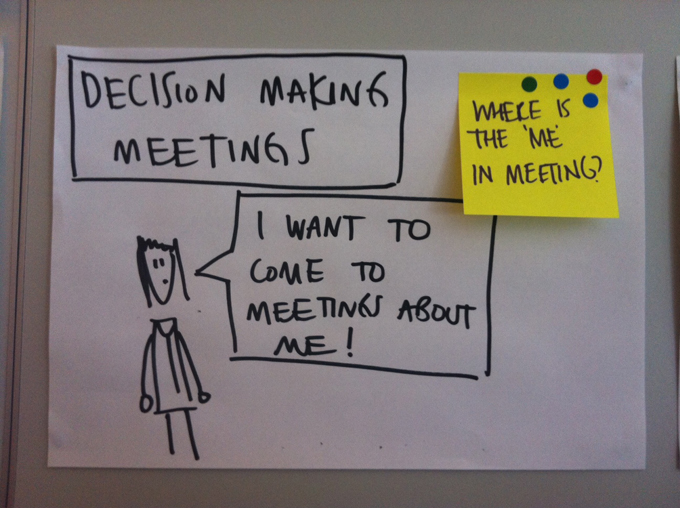
This idea was also in response to a young person experience, where she was told two housing options that were open to her when she left care but didn’t feel part of that process of choosing or deciding upon why these two options were right for her. Discussions were had around why she didn’t feel she had been part of the meeting when workers felt that she had been, and it lead to conversation around processes, inclusion and how to approach decision making collaboratively.
Round up of the ideas
There are a great variety of ideas here which there was a lot of energy around. Most of them are either ideas for processes or products. There were also ideas that people would like to change about the system, i..e leaving care at 18 or 21 and being able to go back to the place of care you left (should you need to) – and even through the scope of this project does not extend to these ideas does not mean they should be forgotten about.
